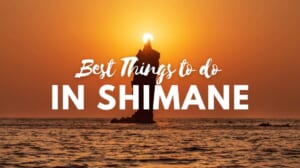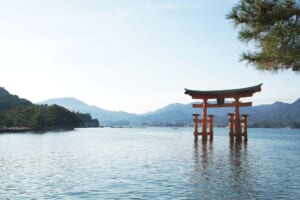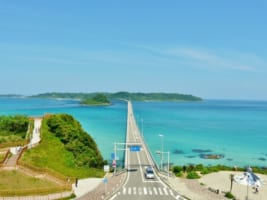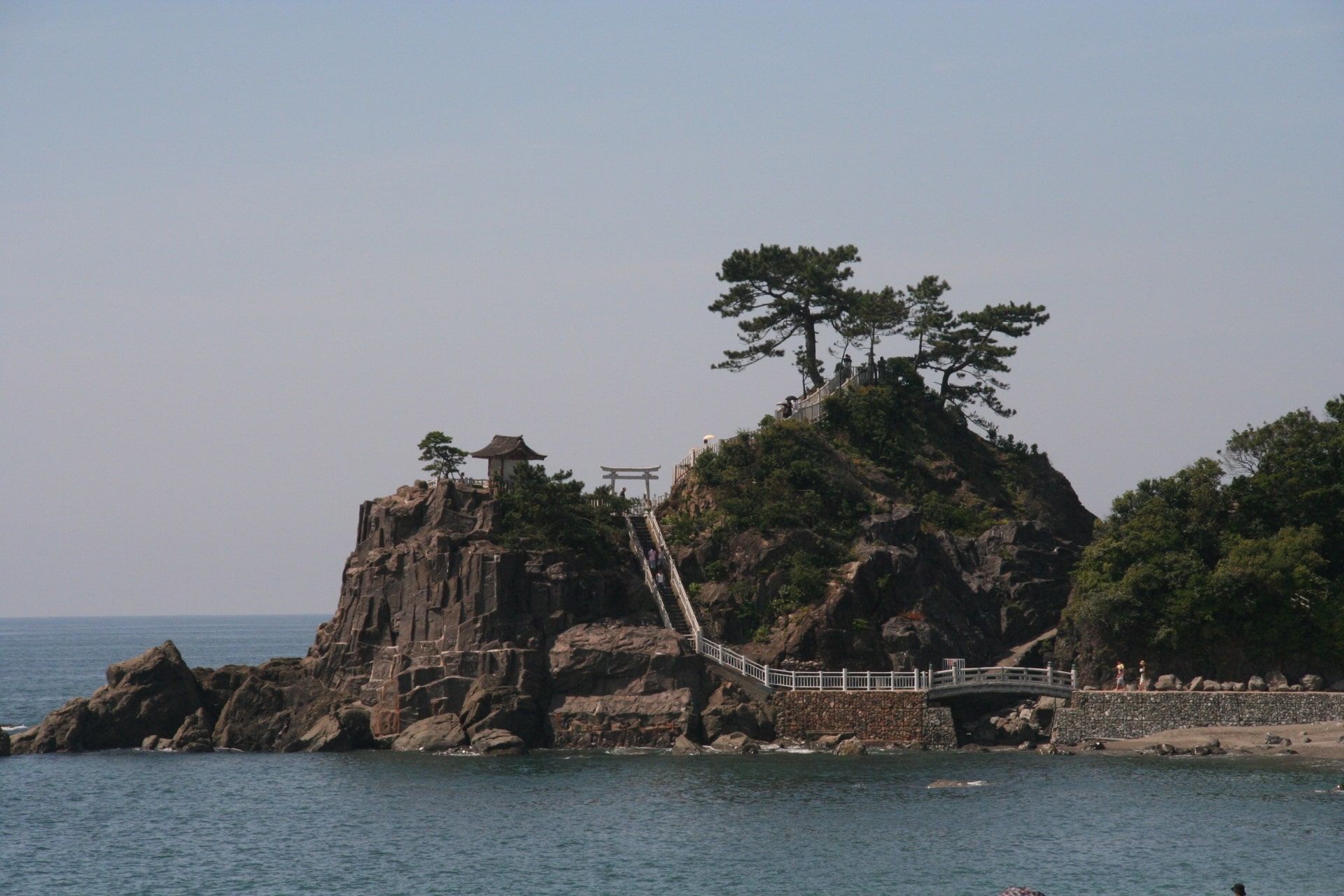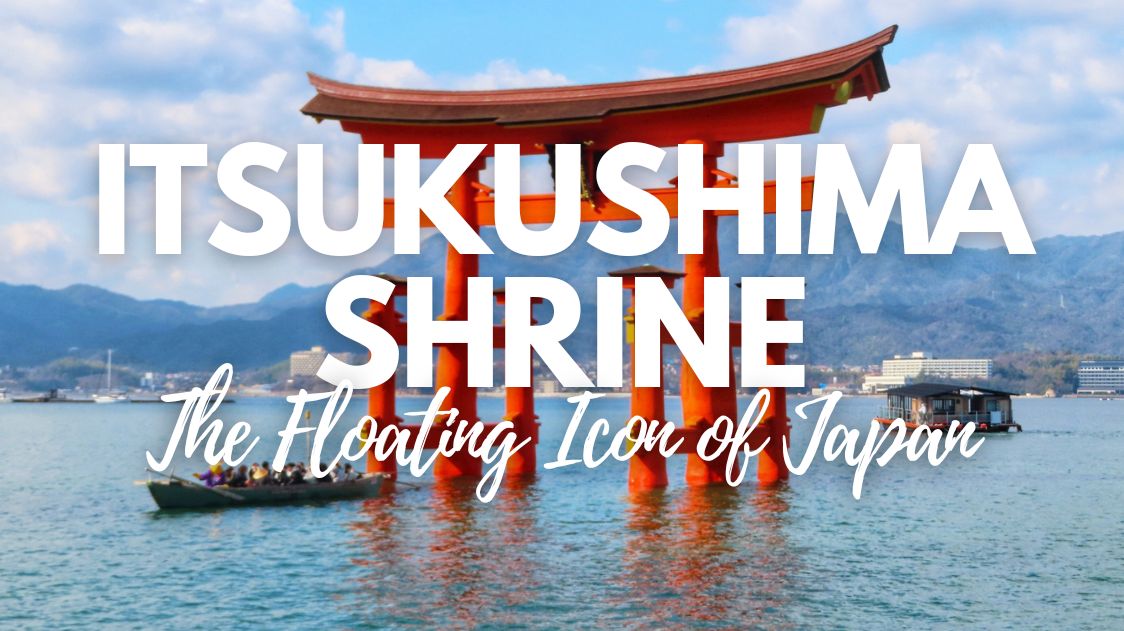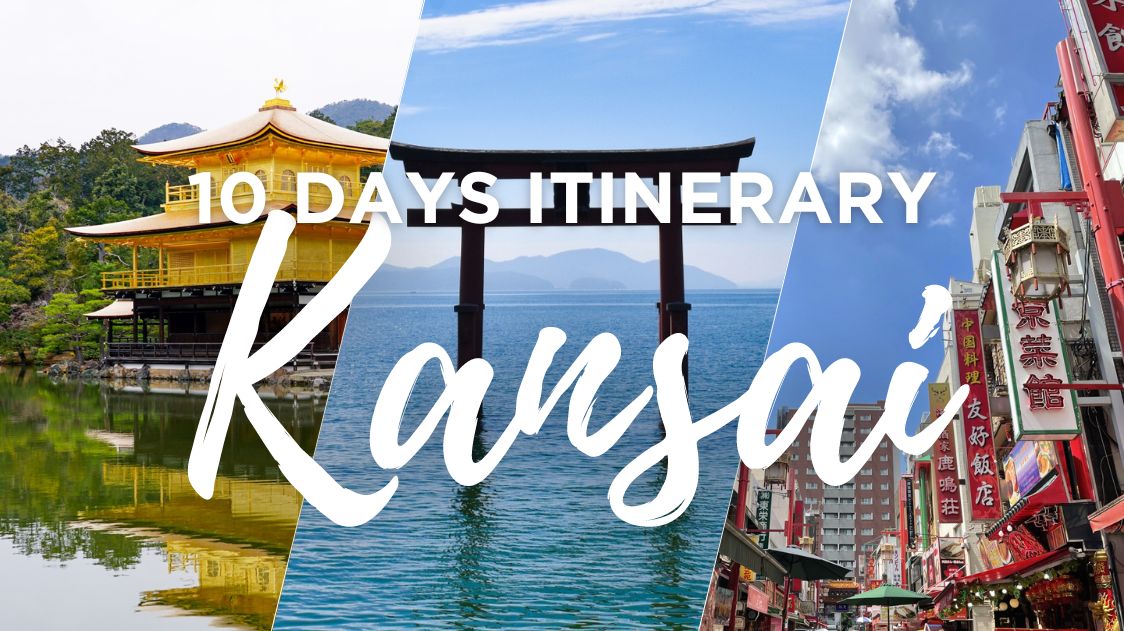Best Things to Do in Chugoku
Insider's Guide to Japan's Most Underrated Region
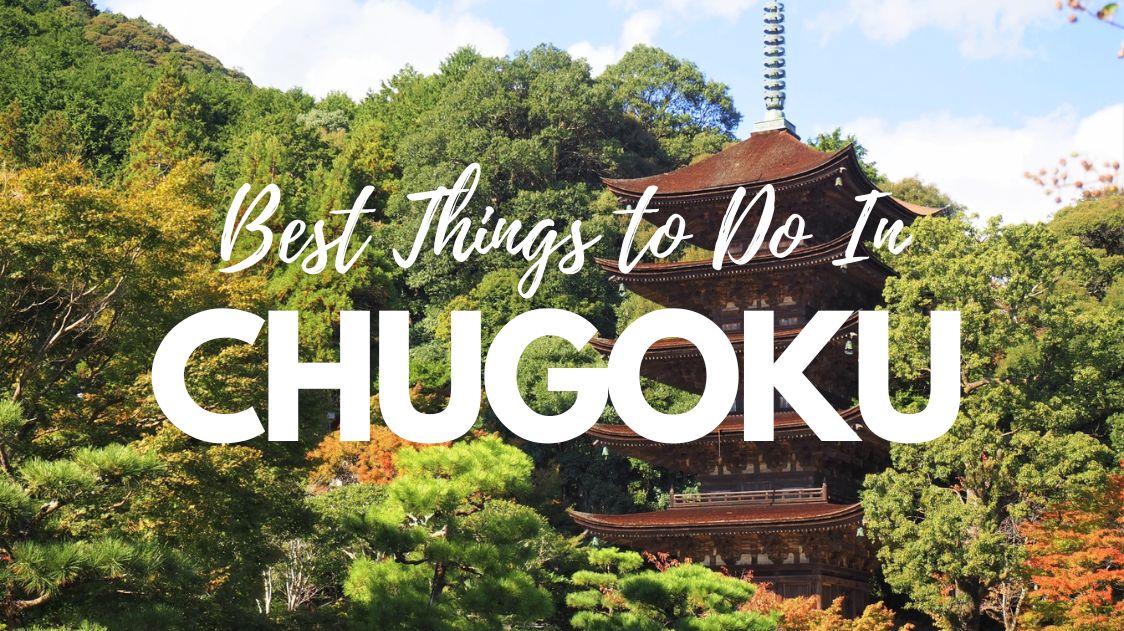
Chugoku, sometimes known as a land of mystery because of its off-the-beaten-path status, is a captivating region in western Honshu that refuses to be overshadowed by Tokyo’s modern buzz or Kyoto’s historical allure. Instead, Chugoku offers its own compelling attractions, inviting you to swap the usual tourist spots for a journey through misty islands, towering cliffs, and vibrant cities like Hiroshima.
Here, the thrill of exploration is as real as the air you breathe. Chugoku offers a dynamic landscape that shifts with every step you take, from rugged coastlines to beautiful mountains and anything you could think of in between. Sightseeing here is experiencing a region that’s rich in stories, waiting for you to become a part of them.
*Please note that this article contains affiliate links.
<<Buy your JR Okayama-Hiroshima-Yamaguchi Area Pass here!>>
<<Buy your Bullet Train tickets here!>>
Chugoku: Where Japan’s Hidden Charms Take Center Stage
Japan is a country of contrasts, divided into eight major regions: Hokkaido, the snowy frontier; Tohoku, the resilient north; Kanto, the bustling heart; Chubu, the mountainous center; Kansai, the cultural soul; Shikoku, the tranquil island; Kyushu and Okinawa, the southern paradises. Located between Kansai and Kyushu is Chugoku, a region that’s like the intriguing middle child of the Japanese family.
Comprising five prefectures—Tottori, Shimane, Okayama, Hiroshima, and Yamaguchi—Chugoku is a geographical marvel. Tottori is famous for its sand dunes, a Sahara in miniature. Shimane takes you back in time with its ancient shrines. Okayama boasts the “Garden of the World,” Korakuen. Hiroshima, a city reborn from its ashes, is a testament to human resilience. Lastly, Yamaguchi, often called the “Kyoto of the West,” enchants with its scenic beauty and historical sites.
Located in the western part of Honshu, Japan’s largest island, Chugoku is a region that offers a bit of everything: from mountains and coastlines to cities and countryside. It’s a place where tradition meets modernity, where the sunsets are as memorable as the samurai legends.
1. Hear the Echoes of Silence Speak Volumes at Hiroshima Peace Memorial Park
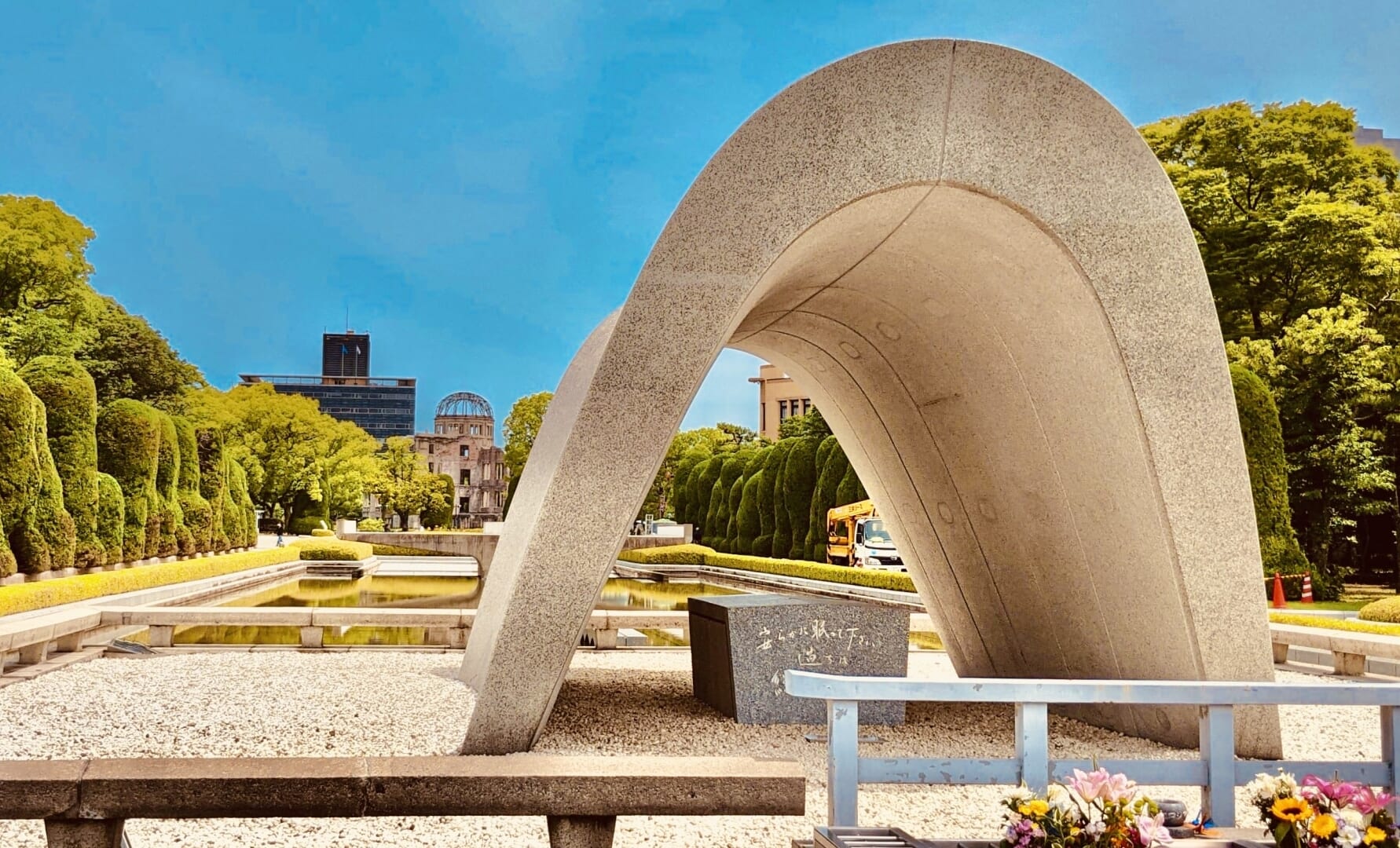
Nearby, the Peace Memorial Museum offers a deeply moving experience, with exhibits that tell the stories of survivors and the lost. But it’s not all about the past. The park is also a testament to Hiroshima’s commitment to a future free from nuclear weapons. The eternal flame, which will only be extinguished when all nuclear weapons are abolished, serves as a beacon of hope. Here, silence isn’t empty; it’s filled with the echoes of lessons we must never forget.
More info: Hiroshima Peace Memorial: “Must Never Fade” Memory
2. Watch as Time Slows Down at Kurashiki Bikan Historical Quarter
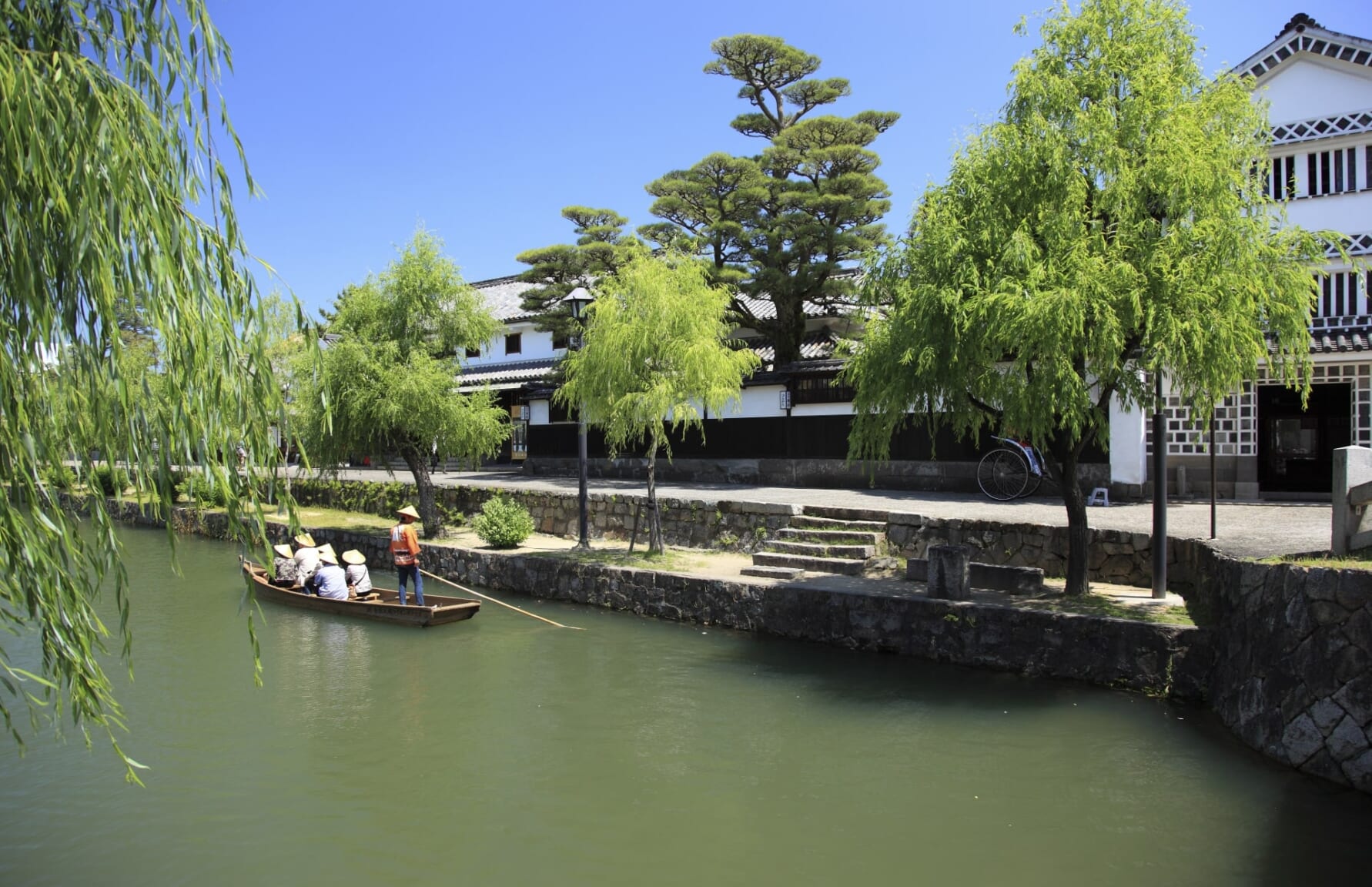
The centerpiece is the willow-lined canal, once a vital part of Kurashiki’s rice distribution network. Today, it serves as a picturesque backdrop for boat rides that transport you to the Edo period. But don’t let the historical façade fool you; this area is also home to the Ohara Museum of Art, where you can find Western masterpieces by artists like El Greco and Monet. It’s a place where the past and present coalesce in a beautiful dance, and you’re invited to join in.
3. Enjoy a Palette of Nature and Canvas at the Adachi Museum of Art
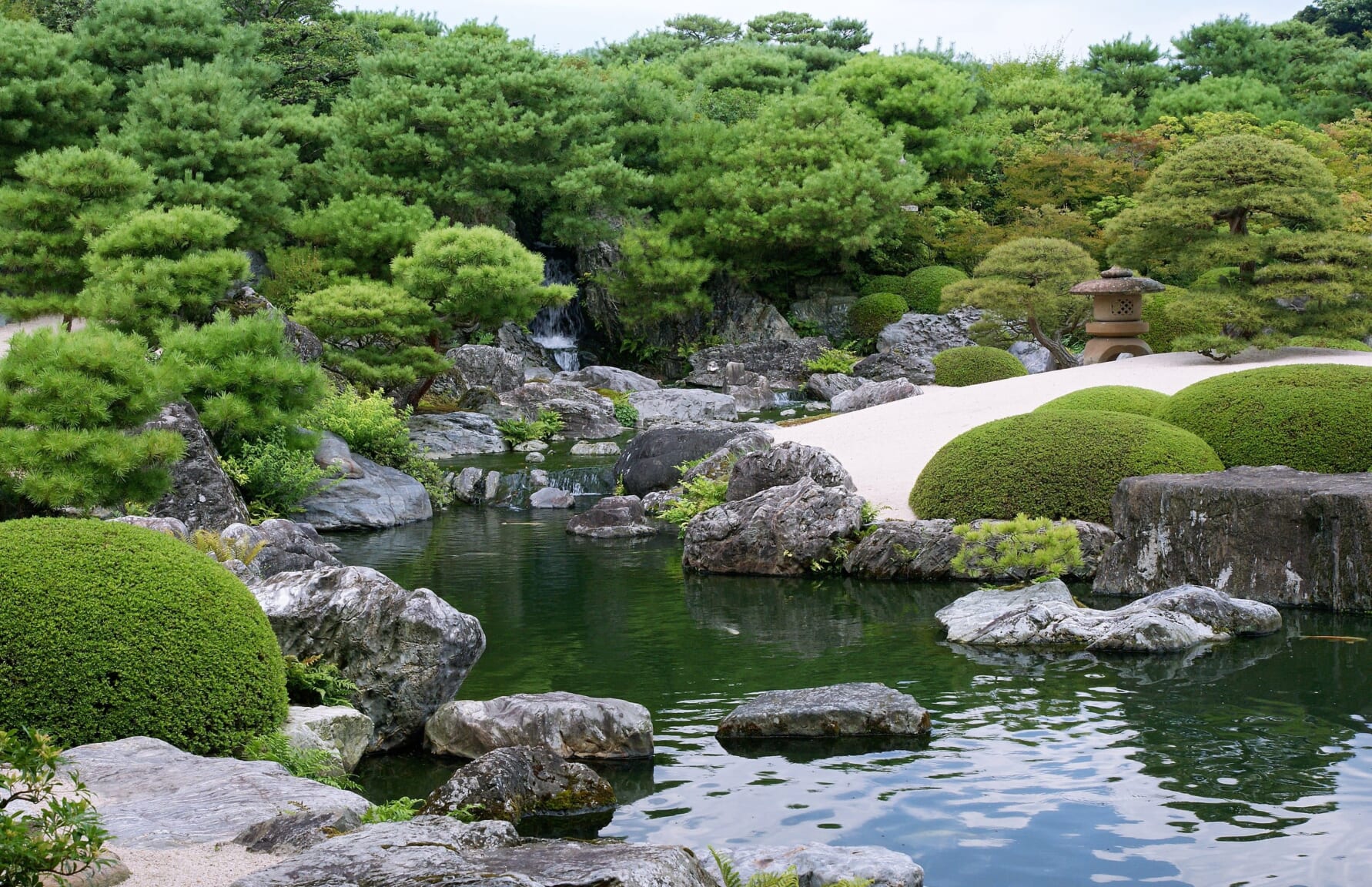
If you think art is confined to frames and canvases, the Adachi Museum of Art (足立美術館) in Shimane will make you reconsider. Founded by Zenko Adachi, the museum brilliantly blurs the lines between traditional art galleries and the art of landscaping. Inside, you’ll find an impressive collection of modern Japanese paintings, ceramics, and sculptures.
But the real showstopper is the garden, often ranked as the best in Japan. Designed to be viewed from specific points within the museum, the garden becomes a series of living paintings that change with the seasons. From the dry landscape garden that evokes Zen simplicity to the white gravel and pine garden that captures the essence of Japanese aesthetics, each section is a masterpiece in its own right. It’s not just a visit; it’s an experience that challenges the very definition of art.
More info: Adachi Museum of Art: the Most Beautiful Garden in Japan
4. See Where the Desert Meets the Sea at Tottori Sand Dunes

You can explore them on foot, by camel, or even paraglide over them for an aerial view. The nearby Sea of Japan adds another layer of beauty, especially during sunset when the sky and sand seem to merge into one. And if you’re into legends, the Sand Museum nearby showcases intricate sand sculptures that bring myths and historical events to life. In Tottori, the sand isn’t just below your feet; it’s the stuff of dreams.
5. Pedal Through Paradise at Shimanami Kaido Cycling Route
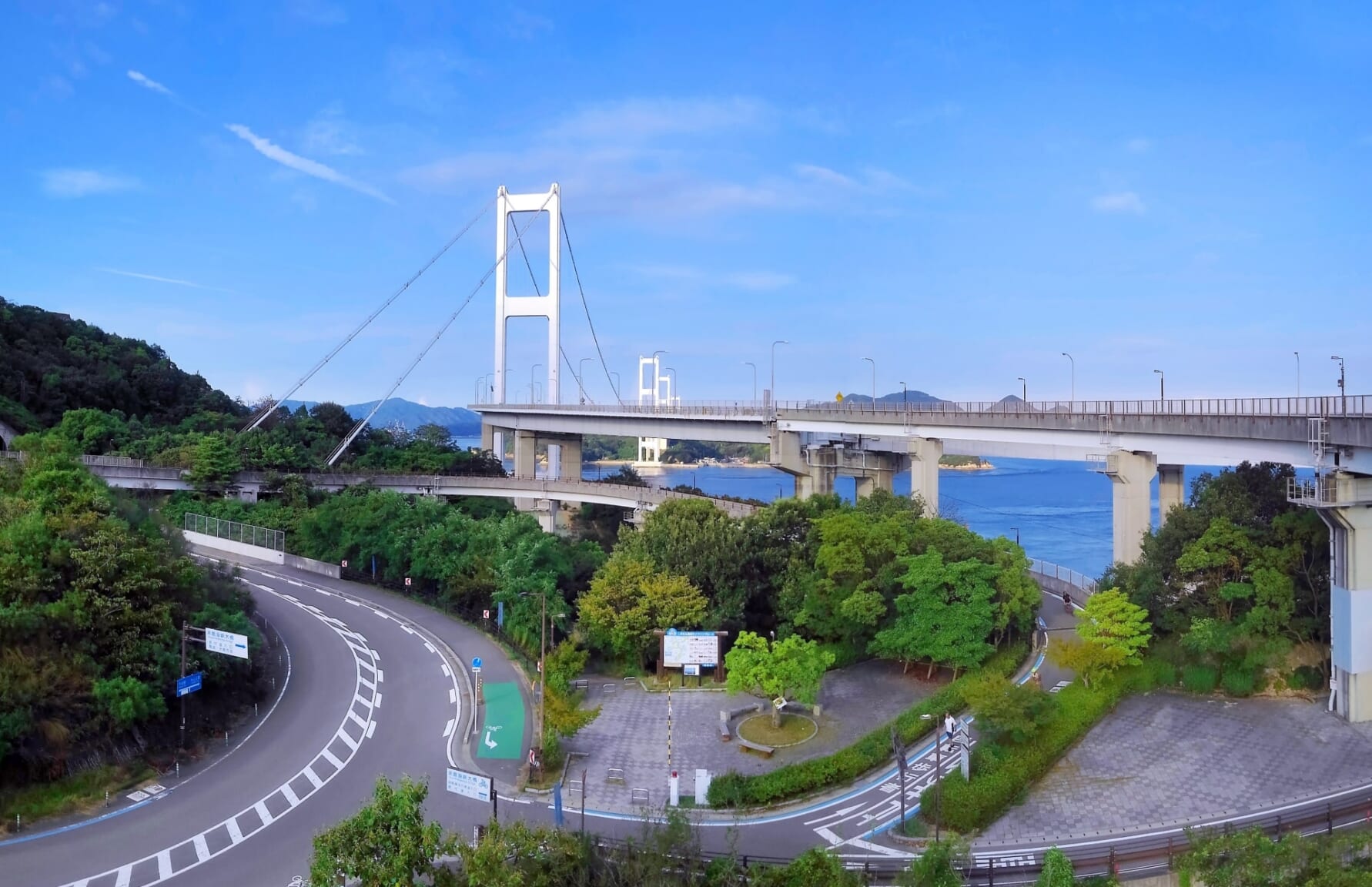
The route is punctuated by a series of architecturally stunning bridges that offer panoramic views of the azure waters below. Whether you’re an avid cyclist or a casual pedaler, the route has options to suit all levels. And don’t worry about bringing your own bike; rental stations along the way have you covered. On the Shimanami Kaido, each pedal stroke writes a line in your travel diary, and each island is a new chapter.
More info: Shimanami Kaido Cycling Guide & Shimanami Kaido: The Best Scenic Cycling Road in Japan
6. Visit The Pagoda of Timeless Grace at Rurikoji Temple
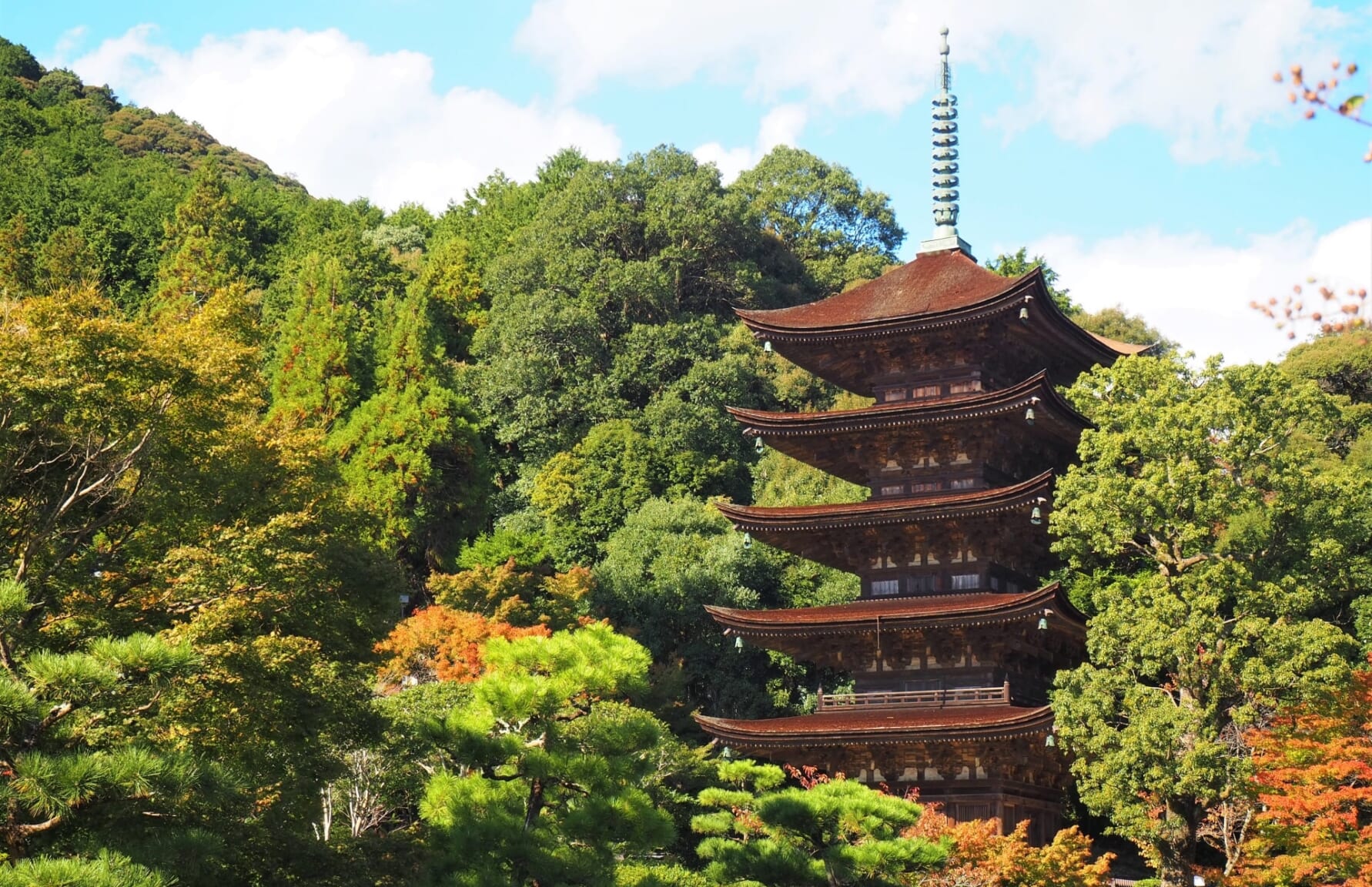
It’s a place that invites contemplation, whether you’re gazing at it from across the pond or climbing its ancient wooden steps. The temple grounds also feature a museum dedicated to the Mori clan, the samurai family that once ruled this region. Here, history is alive in the woods, the water, and the whispers of the wind.
More info: Rurikoji Temple and Joeiji Temple in Yamaguchi
7. Cross the Archway to Elegance at Iwakuni’s Kintaikyo Bridge
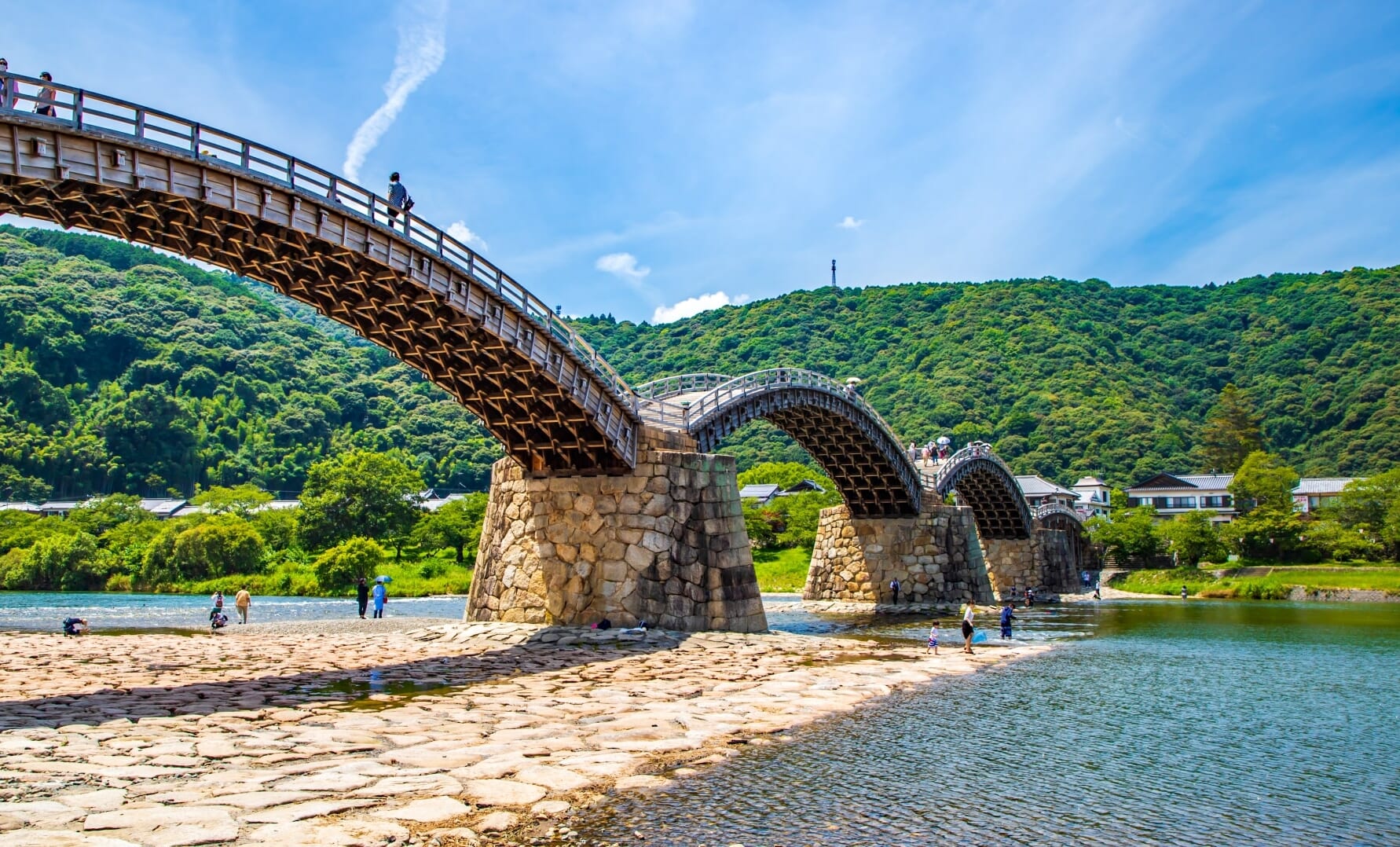
Looking closely, each arch shows the meticulous skill of its builders. The bridge itself has become a local symbol of resilience, having been restored multiple times due to floods and disrepair. A walk across Kintaikyo feels like a stroll through history, culture, and natural beauty, especially during cherry blossom season when the area transforms into a pink wonderland.
More info: Kintaikyo Bridge: the Most Beautiful Wooden Arch Bridge in Japan
8. Discover the Black Tower of Lore at Matsue Castle
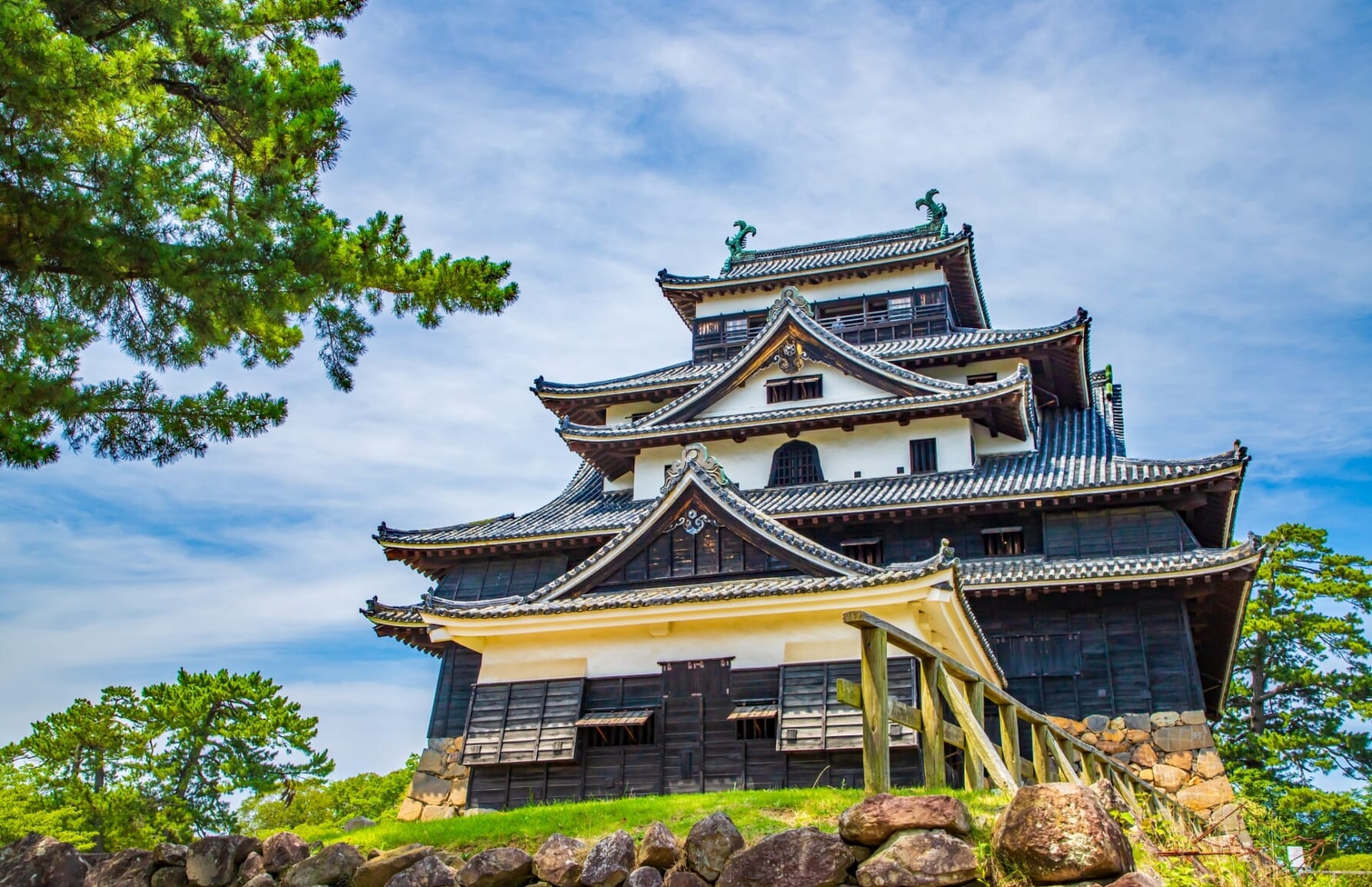
As you ascend its steep wooden stairs, each floor offers exhibits of samurai armor, weapons, and historical documents. But the real reward is the panoramic view from the top, where you can see the city of Matsue unfold before you like a sprawling tapestry. Here, you’re not just a visitor; you’re a time traveler stepping into a bygone era.
9. Be Delighted with a Symphony in Green at Korakuen Garden
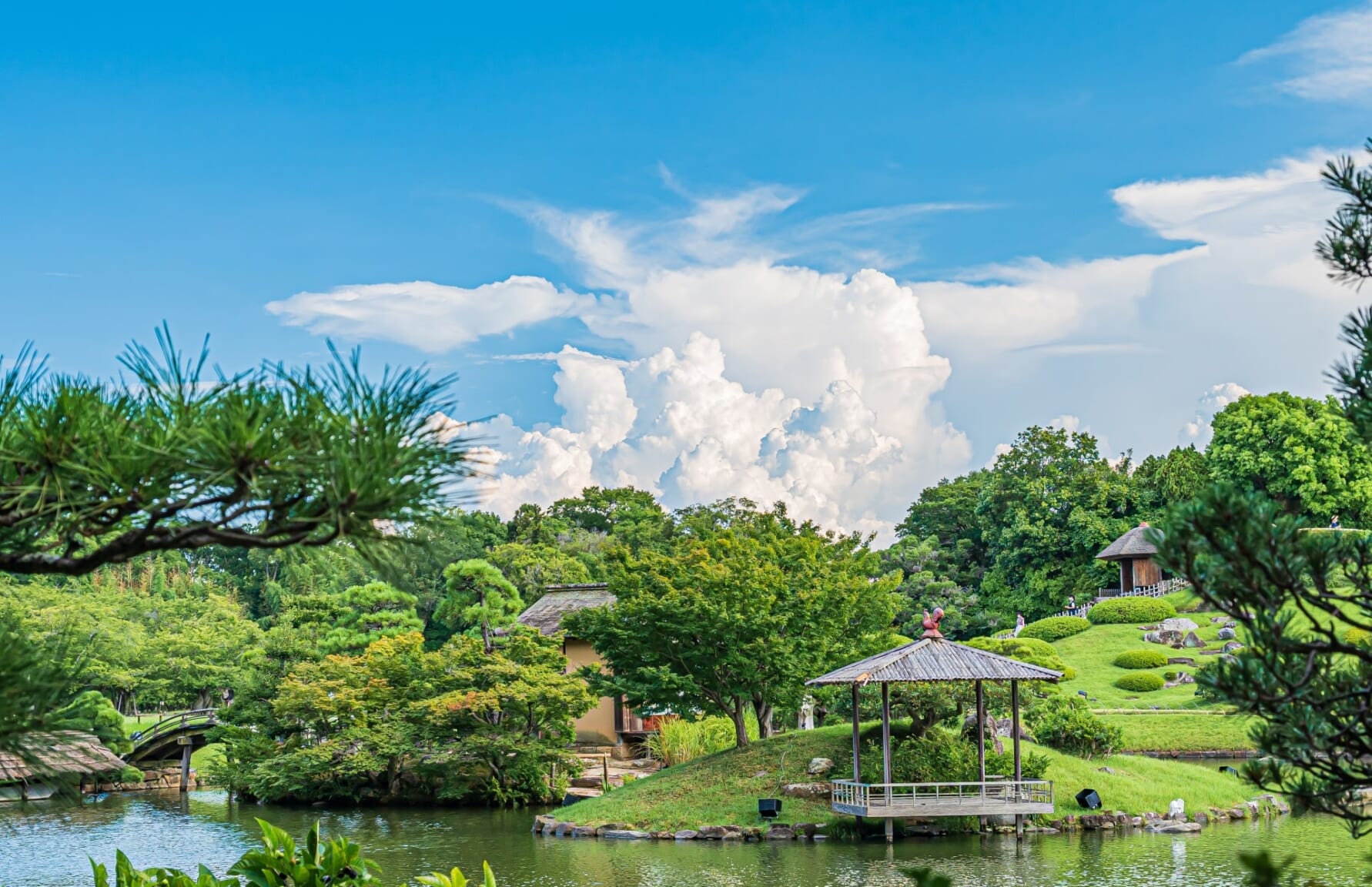
Each section is designed to represent a different landscape style, from the austere beauty of the karesansui (rock garden) to the playful charm of the lotus pond. It’s a place that invites you to slow down, observe, and appreciate the artistry involved in shaping nature.
 Access Access |
7-min walk from Shiroshita Station |
|---|---|
 Official Website Official Website |
https://www.okayama-korakuen.jp/ |
10. Bathe in the Fountain of Wellness at Misasa Onsen
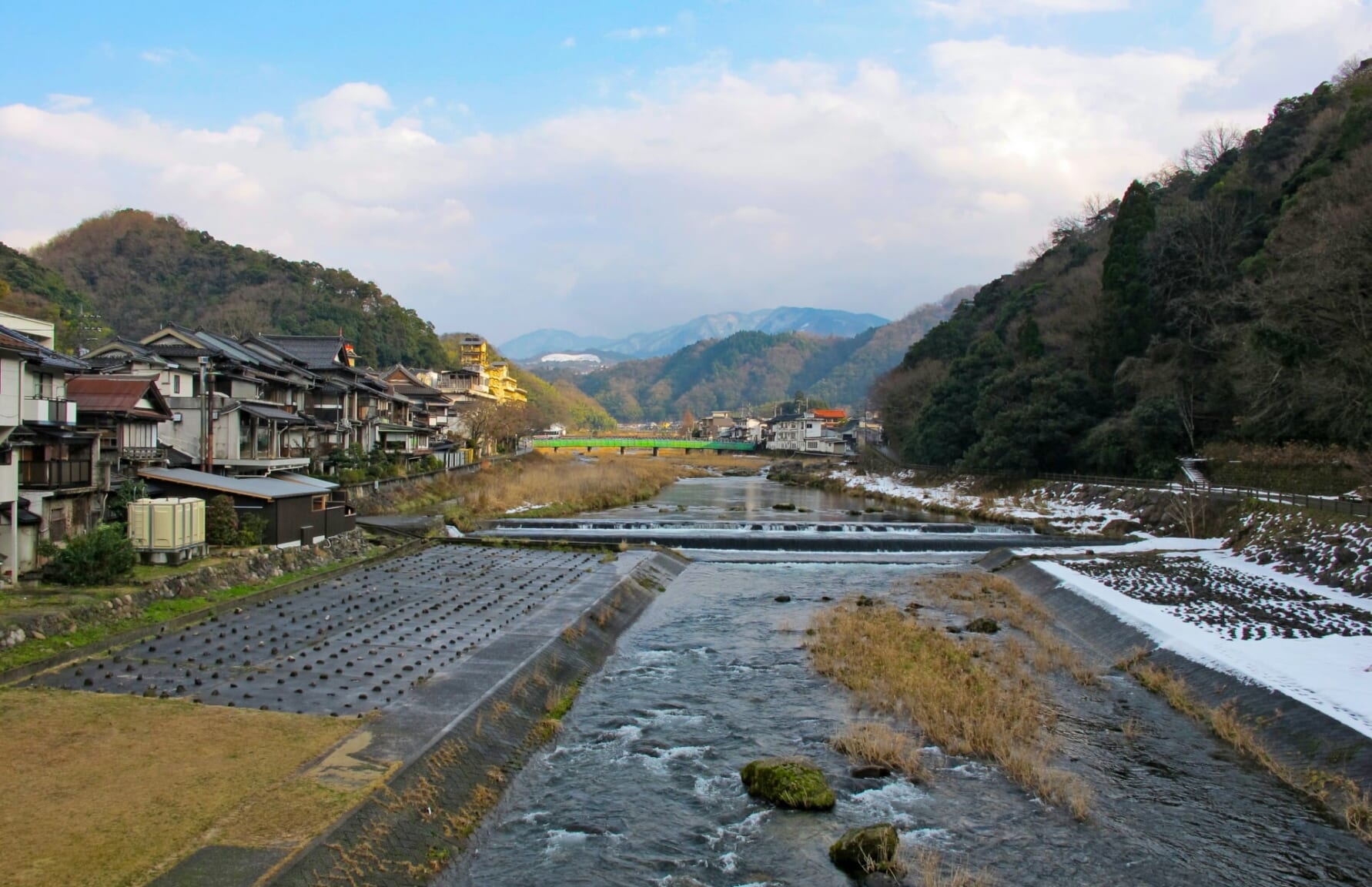
The atmosphere is one of timeless tranquility, enhanced by the surrounding natural beauty and the distant murmur of the Misasa River. Both for enthusiasts of public bathhouses or those who prefer a more secluded ryokan experience, Misasa Onsen offers a holistic retreat that rejuvenates you from the inside out.
<<Buy your JR Okayama-Hiroshima-Yamaguchi Area Pass here!>>
<<Buy your Bullet Train tickets here!>>
Best Things to Do in Tottori
Tottori is often synonymous with its iconic sand dunes, the largest in Japan, which offer a variety of activities from camel riding to paragliding. However, the region’s appeal extends beyond this sandy landscape. The San’in Kaigan Geopark, a UNESCO Global Geopark, showcases a range of geological formations and coastal features. Cultural events like the annual Shan-Shan Festival, where participants dance through the streets holding ornate umbrellas, add a layer of local flavor.
When it comes to food, Tottori doesn’t disappoint. The region is particularly famous for its Matsuba crab, a winter delicacy that attracts seafood enthusiasts. With its mix of natural wonders, cultural events, and culinary specialties, Tottori offers a well-rounded travel experience that caters to a wide range of interests.
▽More information about Tottori▽
Best Things to Do in Shimane
Shimane stands as a testament to Japan’s rich spiritual and historical heritage. The region is home to Izumo Taisha, one of Japan’s most significant Shinto shrines, drawing pilgrims and tourists alike. Adding to its historical allure is Matsue Castle, one of the twelve original castles in Japan, offering a glimpse into the country’s feudal past.
Shimane also embraces modernity with events like the En-musubi Perfect Ticket, a matchmaking festival that takes place in October. On the culinary front, Shimane offers its own unique flavors, most notably Izumo soba, a buckwheat noodle dish that’s a local favorite. Overall, Shimane provides a compelling mix of ancient traditions, historical landmarks, modern events, and regional cuisine.
▽More information about Shimane▽
Best Things to Do in Okayama
Known for its mild climate, Okayama has earned its nickname as the “Land of Sunshine.” This favorable weather has given rise to one of its most famous attractions, Korakuen Garden, considered one of the Three Great Gardens of Japan. The region also boasts historical sites like the Kurashiki Bikan Historical Quarter, where well-preserved Edo-period architecture offers a window into the past.
Cultural events are also a highlight, with the Momotaro Festival in August celebrating the legendary hero through parades and performances. When it comes to food, Okayama is a fruit lover’s paradise, known for its delicious peaches and grapes. The local sweet treat, kibi dango, rounds out the culinary experience. With its combination of natural beauty, historical sites, cultural festivities, and diverse food offerings, Okayama presents a multifaceted travel experience.
▽More information about Okayama▽
Best Things to Do in Hiroshima
Hiroshima is a city that has turned its tragic past into a message of peace and hope for the future. The Hiroshima Peace Memorial Park and its Atomic Bomb Dome are poignant reminders of the devastating impact of war, serving as educational sites for visitors from around the world. But Hiroshima is not defined solely by its past; it’s a vibrant city with a lot to offer.
The reconstructed Hiroshima Castle provides a glimpse into the region’s feudal history, while the nearby Miyajima Island is famous for its iconic Itsukushima Shrine and floating torii gate. Hiroshima is also a culinary destination, best known for its unique style of okonomiyaki, a savory pancake that’s a must-try. With its blend of historical significance, natural beauty, and gastronomic delights, Hiroshima offers a rich and multifaceted travel experience.
▽More information about Hiroshima▽
Best Things to Do in Yamaguchi
Yamaguchi is a region that offers a diverse range of experiences, from the architectural beauty of the Kintaikyo Bridge to the spiritual tranquility of the Rurikoji Temple and its five-story pagoda. The Akiyoshidai Plateau and its limestone cave provide a unique natural attraction, offering hiking and spelunking opportunities. Yamaguchi is also known for its cultural events, such as the Yamaguchi Tanabata Chochin Festival, where colorful lanterns light up the summer night sky.
On the culinary front, the region is famous for its fugu, or pufferfish, a delicacy that’s prepared by licensed chefs to ensure safety. With its mix of natural landscapes, historical landmarks, cultural festivities, and unique cuisine, Yamaguchi stands as a compelling destination that caters to a variety of interests.
▽More information about Yamaguchi▽
How to Get to Chugoku
The most convenient way to travel from Tokyo to major cities in the Chugoku region like Hiroshima and Okayama is by Shinkansen, or bullet train. The Nozomi and Hikari services on the Tokaido-Sanyo Shinkansen line are your best bets. The journey to Hiroshima takes about 4 hours, while Okayama is reachable in just over 3 hours.
If you prefer flying, Hiroshima Airport and Okayama Airport are well-connected to Tokyo’s Haneda and Narita Airports. The flight to Hiroshima takes about 1.5 hours, and to Okayama, it’s approximately 1 hour and 20 minutes. From the airports, you can easily reach city centers via bus or train.
For those traveling from Osaka, the Sanyo Shinkansen line will get you to Chugoku’s major cities in no time. Hiroshima is just about 1.5 hours away, and Okayama is even closer, at around 45 minutes. While flying is an option, it’s generally less convenient than the Shinkansen due to the proximity of Osaka to the Chugoku region. However, if you still wish to fly, the journey to Hiroshima or Okayama takes roughly an hour.
<<Buy your JR Okayama-Hiroshima-Yamaguchi Area Pass here!>>
<<Buy your Bullet Train tickets here!>>
Chugoku is a region that defies easy categorization, offering a diverse array of experiences that cater to a wide range of interests. From the serenity of natural landscapes to the pulsating energy of urban centers, it’s a place that invites you to engage deeply with your surroundings. Here, travel is not just about seeing; it’s about feeling, understanding, and immersing yourself in a world that continually surprises and delights.
For more information about traveling in Japan, check these articles below, too!
Written by
Photographer, journalist, and avid urban cyclist, making sense of Japan since 2017. I was born in Caracas and lived for 14 years in Barcelona before moving to Tokyo. Currently working towards my goal of visiting every prefecture in Japan, I hope to share with readers the everlasting joy of discovery and the neverending urge to keep exploring.






